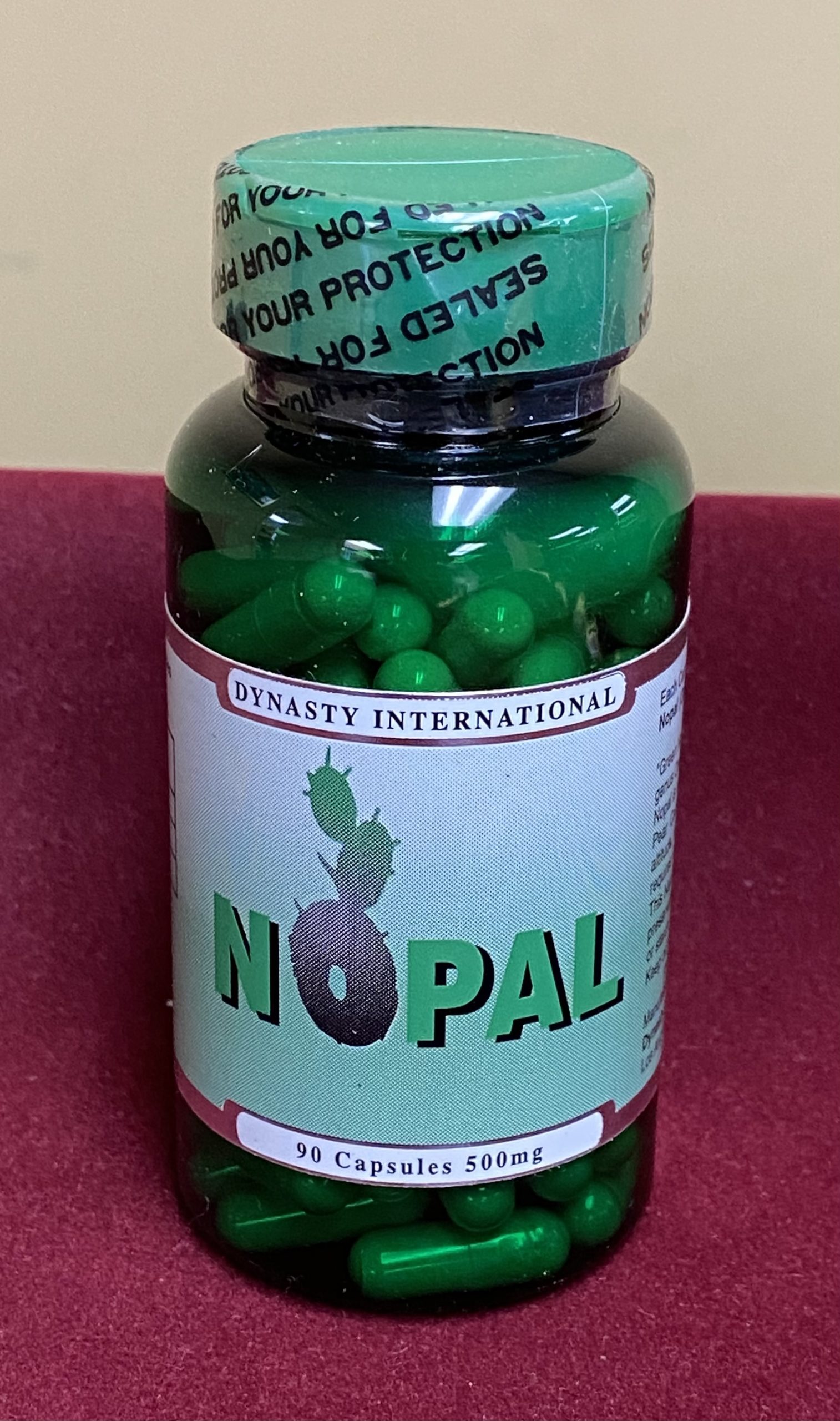Description
한글 내용을 보려면 여기를 클릭하세요
What is Nopal?
What is it – Our plants are from the fious Indium genus Opuntia from the Cactaceae family. Nopal is commonly referred to as the Prickly Pear Cactus. Nopal means cactus in Spanish. The term Nopalitos refers to the pads once they are cut up and prepared for eating. There are two food crops derived from the Nopal . One is the “Nopalitos” which are the cactus pads and the other crop is the prckly “pear” or fruit of the cactus. Grown in Nothern Mexico that are eaten fresh grown in our region.
Nopal is part of the fious indium of the Opuntia plant family. Opuntia or cactus plant has over 300 varieties. Nopal is the plant that is on our web page. The picture show what is called here in the markets Nopal Verde, or green edible Nopal. Please note that all Nopal is green. We call the kind we eat as Nopal Verde. Black and white are not the real color of the plant its just a name.
Nopal Verde (opuntia indica)-Green Nopal
Nopal Blanco (opunta microdasys)-white Nopal
Nopal Negro –Various varietys-Black Nopal
Green Nopal(Indica)- is the best variety to eat if what you want to eat is the pad or leaf. It is the Nopal referd to as opuntia indica. This Nopal is called green because it has a bright green color, is very tender and very delicious . Indica can only grow at high altitude, with a certain moisture level and it requires very specific volcanic soil conditions. Temperature is also important. Nopal verde really is only grown in three regions of Mexco. Morelos , Puebla and Mexico City. All these regions grow what is called the Milpa Alta variety.
Nopal History:
The cactus a native to Mexico. It has been noted that the Nopale was grown and eaten as a vegetable in Central Mexico, since before the Spanish arrived. The Spanish explorers took the plant back to Spain and the plant spread throughout North Africa with the moors. The plant is currently grown throughout Mexico as well as parts of the United states and in areas of the mediterranean.
Health Benefits
For over 7,000 years fresh Nopal has been consumed for its many nutritional qualities, only recently in he last 20 years has science truly been interested in the investigation of this remarkable medicinal plant. Nopal Verde (Opuntia-Indica) or green Nopal, the only edible type has recently been recommended in a vast array of circulation, heart and digestive disorders.
COLON CLEANSING: Treatment and Prevenion of Colon Cancer
Nopal contains both soluble and insoluble dietary fibers. The insoluble dietary fiber in Nopal (more commonly known as roughage), absorbs water and gently hastens food through the digestive track and contributes to regular bowel movements. In addition the presence of insoluble fibers in the colon help to dilute the concentration of potential carcinogens that may be present. Soluble fibers also contribute to regularity. Furthermore Nopal is a gentle alternative to Psyllium for those with a sensitivity or allergy to psyllium.
HYPERLIPIDEMIA (High cholesterol/Fat level): known to reduce cholesterol
Nopal’s amono acids, fiber and B3(niacin) prevent excess blood sugar conversions into fats, while reducing the total cholesterol, tri glyceride and LDL cholesterol levels by metabolizing fat and fatty acids and eliminating excess bile acids(excess bile acid is eventually converted into cholesterol). Other research studies on B3(niacin)show its conversion effects of LDL (bad) to HDL (good) forms of cholesterol and help decrease the risk of heart disease.
ARTERIOSCLEROSIS: Blocked arteries are prevented
The effects of the amino acidsand fiber, including the anti-oxidant of Nopal’s vitamin C and A (B-carotene) prevents the likelihood of blood vessel wall damage and the formation od fatty plaques.
GASTRIC ULCERS/Gastrointestinal Disorders: Reduces and eliminates gastro problems
Nopal vegetable fibers and mucilage’s control excess gastric acid production and protect the gastrointestinal mucus. This pH buffering and coating has been studied for the prevention of damages that may occur from ingesting spicy foods, aspirin and other NSA IDs.
DIGESTION/ LIVER FUNCTION: Detoxifies and aids in prevention of various illnesses
Nopal’s naturally available vitamin A, B1,2,3, C and the mineral: Calcium, Magnesium, Sodium, Potassium, Iron and fibers in Lignin, Cellulose, Hemicelluloses, Pectin, Mucilage’s, and Gum form along with the 17amino acid to help detoxify and support not only the liver but also the body in general. Amonia, free radicals and environmental toxins such as alcohol and cigarette smoke-which all suppress the immune systems, are removed by Nopal. Nopal also aids in the balancing and calming of the nervous systems, which benefits the body’s overall function.
OBESITY: Fiber Rich
Nopal’s 17 amino acid, 8of which are essential and must be ingested as food, provide you with more energy and less fatigue by helping the body to lower blood sugar; elevate moods, suppress the appetite and provide nutrients. Fat build up is prevented, while fat break down and excretion is increased. Insoluble fibers such as Lignin are known for increasing satiety and eliminating excessive binges. Nopal’s vegetable protein helps the body pull fluids from the tissues back in to the bloodstream thereby diminishing cellulite and fluid retention. Also Nopal’s 17 amino acids, fibers, vitamins and minerals address the need of a vegetarian diet.
HYPERGLYCEMIA (High blood sugar) Very important in Diabetes II Patients
Nopal stabilizes and then regulates blood sugar by increasing the body’s levels and sensitivity to insulin. Research studies have shown significant hypoglycemic effects maximal from 4 to 6 hours after Nopal ingestion in type II diabetics and non diabetics. The dangerous side effects of high blood sugar levels including visual, blood vessels and nerve tissue disturbances are all addressed by Nopal’s content of B-carotene (Vita A, C and B1,2,3,)
An excerpt from Medicinal use of the Latin Food Staple Nopales: The Pricky Pear Catcus By Miguel A. Gutierrez
The Nopal has been used as a food medicinal plant and is a hallmark vegetable in the Latin American diet. Various studies have demonstrated Opuntia’s ability to affect blood glucose and hypercholeterolemia. The intake of prickly pear pectin decreases plasma LDL levels, increases expression of apolipoprotein receptor expression of ,increase hepatic LDL turnover, and affect cholesterol homeopstsis in guinea pigs. Prickly Pear cactus demonstrates the ability to decrease blood glucose levels as well the hyperglycemic peak during glucose tolerance testing. In addition, Opuntia has demonstrated the ability to control experimentally induced diabetes. Similar studied, along with domestic surveys have prompted international evaluation of the prickly pear cactus to determine its ability to regulate glucose utilization. Currently, homeopathic industries have begun to incorporate Opuntia into supplements intended to help regulate plasma glucose levels.


